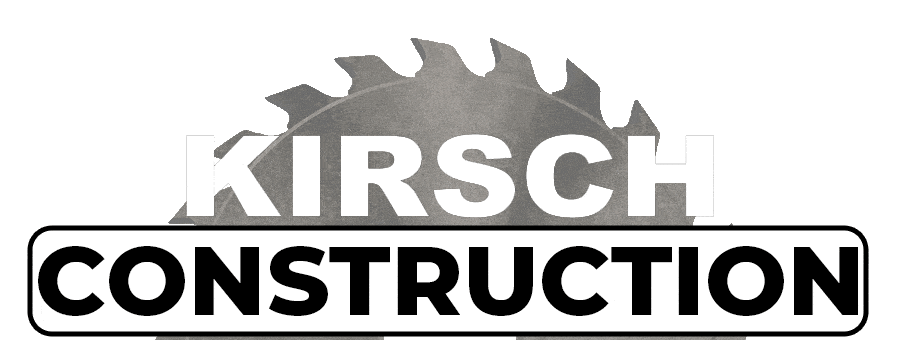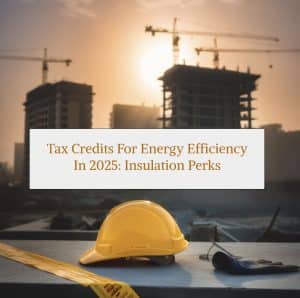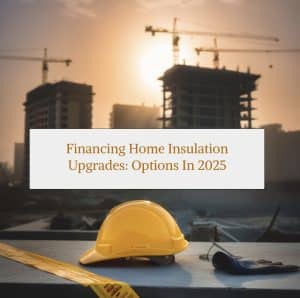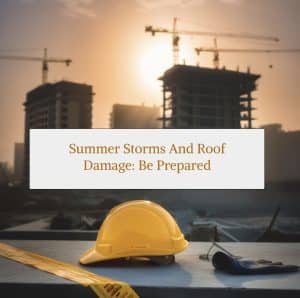## Unveiling the 2025 Insulation Tax Credit: Boosting Energy Efficiency
In the ever-evolving landscape of home improvement and sustainability, the 2025 insulation tax credit is poised to make a significant impact on both residential and commercial properties. As we look toward the future, energy efficiency becomes a top priority, not only for environmental reasons but also for the financial benefits it brings. This credit serves as an incentivization for property owners who choose to invest in high-quality insulation, providing both immediate savings and long-term value.
Insulation plays a critical role in maintaining the energy efficiency of a building. It acts as a barrier to heat flow, keeping homes warmer in the winter and cooler in the summer. With the 2025 insulation tax credit, homeowners and business owners alike have a valuable opportunity to enhance their properties’ energy performance whilst enjoying substantial financial perks. This initiative aligns with the increasing demands for sustainable building practices, offering much-needed support to those committed to reducing their carbon footprint.
The 2025 insulation tax credit not only benefits individual property owners but also supports a broader agenda of environmental responsibility. As part of a comprehensive energy policy, these credits help in tackling the adverse effects of climate change by promoting reduced energy consumption. By embracing this opportunity, property owners contribute to a systemic change toward a greener future, underlining the importance of energy-efficient upgrades in modern construction practices.
## Understanding the 2025 Insulation Tax Credit
The 2025 insulation tax credit is a fiscal incentive designed to encourage the adoption of energy-efficient insulation solutions across various property types. It is a government-backed initiative aimed at reducing the environmental impact of energy consumption in the housing and commercial sectors. By offsetting a portion of the costs associated with purchasing and installing insulation materials, this tax credit alleviates some of the financial burden faced by property owners.
Availability and eligibility of the 2025 insulation tax credit vary based on specific criteria, such as the type of property, the insulation materials used, and the energy efficiency improvements achieved. It is crucial for property owners to understand the requirements and limitations associated with claiming this credit to maximize their benefits. Consulting with a tax professional or financial advisor can ensure compliance with the guidelines and optimize the financial returns linked to insulation improvements.
This tax credit not only covers traditional insulation like fiberglass and foam products but also extends to innovative and sustainable materials like recycled denim and advanced spray foams. By adopting a wide array of insulation products, the initiative embraces diversity in energy-efficient solutions, thus broadening the scope of eligible projects. Understanding the specifics of these materials and their associated benefits can significantly enhance the energy efficiency of a property.
## Importance of the 2025 Insulation Tax Credit
The significance of the 2025 insulation tax credit extends beyond mere financial savings, encompassing broader environmental and societal impacts. With climate change posing a grave threat to ecological and economic stability, initiatives like these are vital in promoting sustainable practices. By focusing on improving energy efficiency through enhanced insulation, property owners can significantly reduce their buildings’ energy demands and, consequently, their carbon emissions.
Furthermore, the adoption of the 2025 insulation tax credit encourages the wider construction industry to prioritize energy-efficient materials and practices. It sets a new standard for modern construction, where sustainability and environmental responsibility take precedence. This shift not only benefits the environment but also boosts the market for energy-efficient products and services, fostering innovation and competition within the industry.
From a personal finance perspective, the 2025 insulation tax credit offers considerable cost savings that can alleviate the financial pressures of homeownership and property management. By reducing energy bills and lowering maintenance costs, this incentive allows property owners to allocate their resources towards other investments or savings, thus enhancing their financial stability and well-being.
## Real-World Examples of the 2025 Insulation Tax Credit in Action
Consider a typical residential homeowner in Ebensburg, Pennsylvania, who leverages the 2025 insulation tax credit to upgrade their attic insulation. By selecting high-quality spray foam insulation, they not only improve their home’s energy efficiency but also qualify for a substantial tax credit, effectively reducing the overall cost of the project. This upgrade translates to lower energy bills and a more comfortable living environment, exemplifying the practical benefits of participating in this tax incentive program.
Similarly, a small business owner in the area could see remarkable benefits from the 2025 insulation tax credit by investing in energy-saving insulation materials for their commercial property. With reduced energy consumption, the business not only diminishes its operational costs but also enhances its corporate social responsibility profile by aligning with sustainable business practices. The tax credit acts as a catalyst for such projects, making them financially viable and attractive.
In the case of multifamily properties, landlords taking advantage of this tax credit can significantly increase the value and appeal of their properties. Enhanced insulation leads to lower utility costs for tenants, potentially allowing property owners to command higher rental prices. Consequently, the initial investment in insulation is swiftly recouped through increased rental income and tax savings, demonstrating a savvy financial strategy facilitated by the 2025 insulation tax credit.
## Steps to Take Advantage of the 2025 Insulation Tax Credit
To successfully claim the 2025 insulation tax credit, property owners must follow several strategic steps. First and foremost, conducting a thorough energy audit of the property is essential. This evaluation identifies areas where energy efficiency can be improved and helps determine the type and extent of insulation required. Professional energy auditors provide valuable insights that guide decision-making during the planning phase.
Once the energy audit is complete, selecting appropriate insulation materials that meet the technical requirements is crucial. Owners should consider factors such as thermal resistance (R-value), material durability, and environmental impact when choosing among various insulation options. Investing in high-quality materials not only assures better long-term performance but also maximizes eligibility for the tax credit.
After selecting and installing the insulation, maintaining detailed records is vital to ensure compliance with tax regulations. These include installation invoices, manufacturer certifications, and documentation of the claimed credit. Proper record-keeping facilitates the filing process and serves as proof of compliance with program requirements. Property owners should consult with tax professionals to navigate the complexities of claiming the 2025 insulation tax credit smoothly.
## Common Pitfalls to Avoid When Claiming the 2025 Insulation Tax Credit
While the benefits of the 2025 insulation tax credit are substantial, there are common pitfalls that property owners need to avoid to assure successful claims. A prevalent mistake is neglecting to meet specific eligibility criteria. This includes using non-qualifying materials or failing to meet the required energy efficiency standards. Careful review of program guidelines helps prevent ineligibility and ensures optimal tax benefits.
A lack of proper documentation is another common error that could jeopardize an otherwise valid claim. Failing to retain necessary installation receipts, energy audit reports, or manufacturer’s certifications can lead to complications during tax filing. Property owners must organize and store all relevant documentation to support their claims effectively, ensuring a seamless application process.
Lastly, misunderstanding tax filing procedures can result in mishandled or invalid submissions. Incorrectly applying the tax credit or misstating the value of the energy improvements can lead to disputes with tax authorities. Engaging qualified tax professionals to assist with filing ensures the accuracy of claims and maximizes the financial advantage provided by the 2025 insulation tax credit.
## When to Involve Professional Roofing Services
Roofing and insulation go hand-in-hand in maintaining a property’s energy efficiency, making professional intervention an essential part of any comprehensive upgrade strategy. Whenever insulation upgrades involve roofing components, such as soffits or attic spaces, professional roofing services are invaluable. They ensure that all aspects of the installation are seamlessly integrated and capable of delivering optimal energy performance.
Hiring skilled roofing contractors becomes critical when dealing with extensive or complex insulation projects, particularly those involving structural modifications. Experienced professionals offer precise execution, maintaining the integrity of existing roofing systems while implementing new insulation solutions. Such expertise minimizes the risk of costly errors or damage, safeguarding both the short- and long-term efficiency improvements.
Moreover, working with roofing professionals enhances compliance with industry regulations and building codes. When engaged in projects eligible for the 2025 insulation tax credit, ensuring that all upgrades meet legal and technical standards is crucial. Professionals in the roofing field understand these requirements and can provide documentation and support necessary for qualifying for tax incentives.
## How Kirsch Construction Company Elevates Your Insulation Tax Credit Benefits
Based in Ebensburg, Pennsylvania, Kirsch Construction Company has carved out a prominent reputation in roofing and construction services, offering unparalleled solutions for energy efficiency. Recognized for leveraging cutting-edge technology and high-quality materials, Kirsch Construction is the partner of choice for property owners looking to capitalize on the 2025 insulation tax credit by delivering projects that meet stringent efficiency criteria while enhancing property value.
Kirsch Construction Company prides itself on a customer-focused approach, tailoring each project to meet the specific insulation needs of residential and commercial clients. Their comprehensive service offering includes energy audits, material selection guidance, and precision installation, ensuring property owners maximize their eligibility for the insulation tax credit. With extensive local experience, they handle the unique challenges posed by Pennsylvania’s climate, elevating the comfort and efficiency of regional properties.
Furthermore, Kirsch Construction provides meticulous documentation support and guidance throughout the tax credit application, helping clients navigate the regulatory landscape with confidence. By choosing Kirsch Construction, property owners gain a strategic partner committed to delivering high return on investment and unparalleled energy efficiency upgrades, making them the preferred choice for those pursuing the benefits of the 2025 insulation tax credit.
## Tax Credits for Energy Efficiency in 2025: Insulation Perks FAQs






